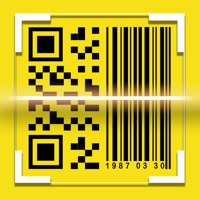

Barcodes hold key product information at the point of sale, such as the price and name of the manufacturer. QR codes are often used differently than barcodes.

QR codes are often square-shaped, displaying their data vertically and horizontally.

QR Codes Are Shaped Differentlyīarcodes are typically rectangular, which requires scanning devices to read the barcode's data horizontally. However, there are several differences between barcodes and QR codes - both in their uses and their characteristics. Traditional barcodes are still a common way for businesses to identify consumer packaged goods (CPGs) and manage their product inventory. Although most smartphones scan QR codes automatically, many won't scan barcodes so easily - you'll need a special app for that.ĭoes the rise of QR codes mean traditional barcodes are a thing of the past? Of course not. QR codes are two-dimensional and the data stored in them is read horizontally and vertically.īoth barcodes and QR codes can be scanned using a laser or a smartphone as long as the tool being used has the correct capabilities of reading vertical and horizontal data. Barcodes are one-dimensional and the data stored in them is read horizontally. If you don't fancy either of the above two methods, you can also head to the App Store where you'll find a wide selection of free QR code reading applications.QR codes and barcodes are similar in that they are both visual representations of data, but how the information stored within them is read sets them apart.
#Qr code reader online free pc plus#
To access the scanner, open the app, click on the plus button at the top of the "Passes" section, then tap on Scan Code to Add a Pass.įrom here, you can scan QR codes for coupons, boarding passes, tickets, and loyalty cards, but only for the specific things that Wallet considers "passes." If you try to scan any other QR code, you'll get an error message. There's also a built-in QR reader in the Wallet app on iPhone and iPod. Wallet app can scan QR codes on iPhone and iPad

Now you can access it by just swiping down from the top right-hand side of your screen, and can get all scan-like whenever you fancy. It does the same thing as in the camera app, but just offers a larger viewfinder to play with.Īll you need to do is swipe down from the home screen to open up the search bar at the top of your iPhone and type in 'Code Scanner' - or you can head to 'Settings', then to 'Control Center' and add 'Code Scanner' to your mix. There's also a secret code scanner in your iPhone - did you know that? It's not an app, as such (well, it is, but you can't see it in your app library) but can be found using Spotlight.
#Qr code reader online free pc how to#
There – in those few steps, you've learned how to scan QR codes on your iPhone or iPad - well done!Īn example of a QR code on iPad The secret code scanner in your iPhone Remember, you can now change the default browser on your iPhone or iPad, thanks to a relaxation in recent versions of iOS, meaning you'll see a notification to go to Chrome or Safari when scanning. This could be a website, app, or feature of your phone. Tap the notification to be taken to the destination of the QR code. (Make sure you have mobile signal or you're connected to Wi-Fi, otherwise this won't work.) No need to hit the shutter button, your iOS device will automatically recognize the QR code and provide you with an on-screen notification. Now, hold the device's camera up to the QR code. This can usually be found on the home page, in the bottom right corner of the device, although on iPads it's on the first page and if you've moved it around it'll be somewhere else. If you want to scan QR codes on your iPhone or iPad, the first step is to open up the camera app on your iPhone or iPad. How to scan QR codes on your iPhone or iPad


 0 kommentar(er)
0 kommentar(er)
